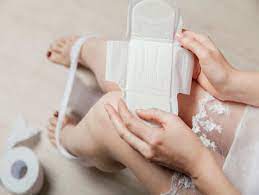Pad Changing Tips: Maintaining Freshness and Preventing Discomfort
Changing a Woman’s Sanitary Napkin. Sanitary napkin changing is an important part of daily hygiene for many women. It is important to take the necessary precautions when changing a sanitary napkin in order to maintain good hygiene and health. This includes washing your hands thoroughly before and after changing, changing the napkin regularly, and disposing of the used napkin in a hygienic manner. Additionally, it is important to choose the right size and type of napkin for your individual needs. By following these simple steps, you can ensure that you are taking care of your body in the best way possible. Please keep reading for details on the following topics:
How to change a pad
How to reduce the amount of blood flow from a period

HOW TO CHANGE A PAD
Select an appropriate pad and underwear
Remove the wrappers from the pad and save
Stick the sticky part of the pad to the underwear, be sure to fold in the wings to the underwear (if present)
Squat over a toilet as menstrual blood continue to flow to keep the clothing clean
Remove the soiled pad by holding the edges with the fingers and peeling it off the underwear
Wrap in the soiled pad in sticker saved from the clean pad, so that the soiled part is inside and dispose
Clean the vagina from front to back
Put on the underwear containing the pad
Wash and dry hands
HOW TO HELP REDUCE THE AMOUNT OF BLOOD FLOW DURING A PERIOD
Herbal remedies can decrease bleeding- Herbal remedies have been traditionally used to reduce excessive bleeding, with some herbs known for their astringent and hemostatic properties. Yarrow, raspberry leaf, and lady’s mantle are commonly used to manage heavy menstrual bleeding, while witch hazel and cramp bark can help reduce uterine bleeding. Nettle, bilberry, and shepherd’s purse are also known for their potential to support blood health and reduce bleeding. Always consult with a healthcare provider before using herbal remedies, especially if you’re taking medication or have underlying health conditions.
Apply ice pack to the abdomen and uterus for 20 minutes every 2 to 4 hours to minimize bleeding and relieve pain
Using pain medication such as NSAIDs (ibuprofen) to relieve pain and discomfort and reduce blood loss
Ensure a balanced diet to keep the period regular and prevent heavy bleeding
Foods rich in Vitamin B contributes towards the reduction on cramping and bleeding
Foods rich in vitamin C encouraging blood clotting and prevents anemia
Foods rich in magnesium helps with hormonal balance and minimizing bleeding
Acupuncture or acupressure by a trained professional help increase blood flow to the uterus and relieving painful cramping
Disclaimer: The information provided in this content is for general informational purposes only. It is not intended as medical or healthcare advice, diagnosis, or treatment. Always seek the advice of a qualified healthcare professional with any questions you may have regarding a medical condition or healthcare decisions.

